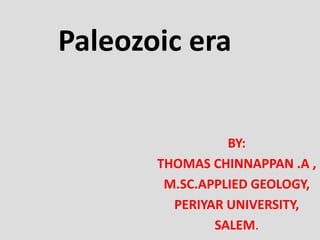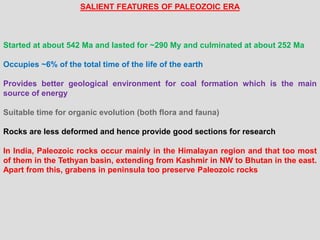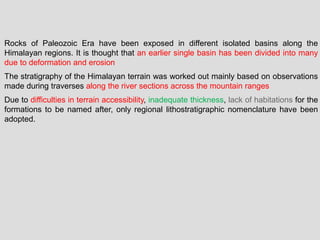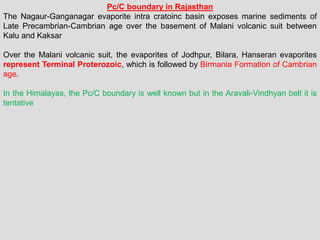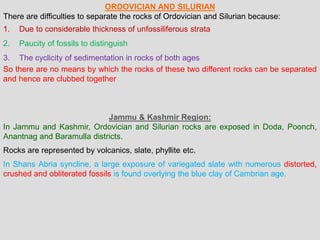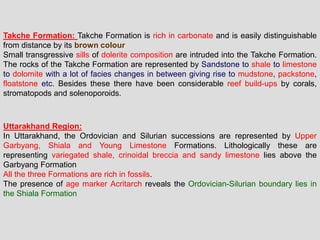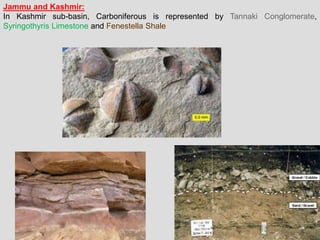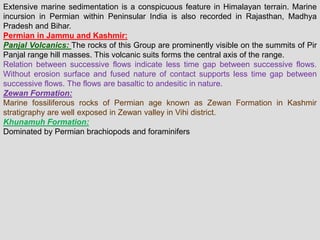The document provides an overview of the Paleozoic era, which began approximately 542 million years ago and lasted around 290 million years. Some key points:
- Suitable time for organic evolution of both flora and fauna. Rocks from this era are less deformed, providing good sections for research.
- In India, Paleozoic rocks are mainly found in the Himalayan region and isolated basins in the peninsula. Stratigraphy has been determined along river sections in the Himalayas.
- Life included early plants, foraminifera, corals, brachiopods, pelecypods, gastropods, cephalopods, ostracods
